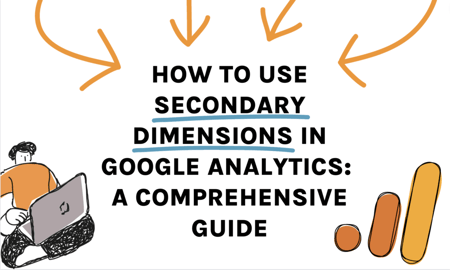Comprehending Secondary Dimensions in Google Analytics: Definition and Critical Assimilation
Introducing the Impact of Secondary Measurement in Google Analytics on Data Evaluation and Insights
In the world of information analytics, the application of secondary dimensions within Google Analytics has arised as a crucial device for extracting deeper understandings and unraveling complex patterns that might otherwise stay covered. By peeling off back the layers of key information collections, secondary dimensions provide a nuanced viewpoint that enriches the understanding of individual actions, site efficiency, and the efficiency of advertising methods.
Exploring the Idea of Additional Measurements
Second dimensions in Google Analytics supply added understandings by permitting individuals to examine main data together with a secondary characteristic. This feature enables a more detailed understanding of the primary information by adding another layer of info for analysis. By integrating second dimensions, individuals can delve much deeper right into the information and reveal useful connections that may otherwise go unnoticed. As an example, by combining the main data of internet site web traffic with second measurements like demographics or behavior, marketers can gain an extra detailed view of their target market and tailor their approaches as necessary.
By exploring the various secondary dimensions offered in Google Analytics, individuals can open brand-new insights and enhance their electronic advertising initiatives. In significance, secondary measurements offer as a powerful device for improving information analysis and driving workable results.
Enhancing Data Interpretation With Secondary Dimensions
Having developed the fundamental understanding of secondary measurements in Google Analytics and their essential function in data evaluation, the emphasis now shifts in the direction of leveraging these additional qualities to improve the interpretation of analytics information (what is a secondary dimension in google analytics). By integrating secondary measurements right into data evaluation, analysts can gain much deeper understandings into customer behavior, website performance, and advertising performance

Furthermore, second measurements aid in contextualizing main data metrics by giving extra layers of info. This contextualization aids in comprehending the 'why' behind the data fads, helping experts make educated decisions and optimizations to improve total efficiency. Inevitably, including additional measurements enriches the information interpretation process, causing more purposeful insights and critical actions.
Revealing Hidden Insights With Second Dimensions
Discovering the depths of analytics information with secondary measurements reveals beneficial insights that would certainly otherwise remain covered. By including secondary dimensions in Google Analytics, organizations can uncover covert patterns, trends, and correlations that supply a more extensive understanding of user habits and internet site performance. These extra layers of data allow analysts to dive deeper into the key measurements, such Related Site as traffic resources or landing web pages, and acquire a much more nuanced viewpoint on how different variables engage with each various other.
Through the use of secondary measurements, analysts can sector and compare data throughout numerous measurements, allowing them to identify specific variables that affect you could try here user engagement, conversion prices, and general success metrics. By pairing the key dimension of 'device group' with the secondary measurement of 'age group,' marketers can determine which age demographics favor accessing the internet site with mobile devices versus desktops.
Leveraging Second Measurements for Actionable Analytics
Building upon the insights unveiled via second dimensions in Google Analytics, companies can now harness this enriched data landscape to drive workable analytics and calculated decision-making. By leveraging second measurements, organizations can dive deeper right into their data to remove useful patterns, trends, and connections that may have formerly gone unnoticed. This deeper degree of analysis enables businesses to get a more thorough understanding of user habits, campaign efficiency, and total website effectiveness.
One key advantage of making use of secondary dimensions for workable analytics is the capacity to segment data based upon specific requirements. This segmentation enables businesses to customize their approaches and projects to different target market groups, resulting in a lot more targeted and reliable marketing efforts - what is a secondary dimension in google analytics. In addition, second measurements provide a more alternative view of individual communications, making it possible for businesses to enhance their web site web content, design, and general user experience
Maximizing Decision-Making With Additional Measurements
To enhance critical decision-making in analytics, leveraging additional measurements in Google Analytics can supply a much more nuanced perspective on customer behavior and project performance. By including additional measurements into information analysis, businesses can dive deeper into the specifics of their internet site visitors' communications and interaction patterns. This added layer of info permits a more extensive understanding of just how different variables, such as demographics, devices, or website traffic resources, effect crucial efficiency indications.

Conclusion
Finally, making use of second measurements in Google Analytics plays a vital duty in enhancing data analysis and uncovering hidden understandings. By exploring this idea, one can obtain a much deeper understanding of individual behavior and make informed choices based on workable analytics. Leveraging second dimensions enables a much more thorough interpretation of information and optimizes the performance of decision-making processes.
